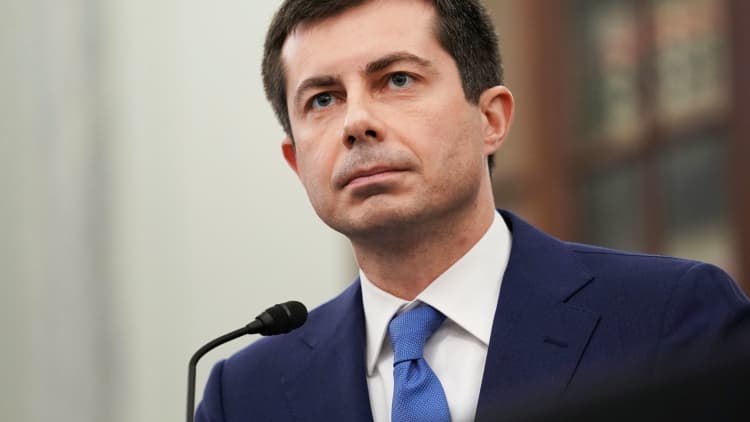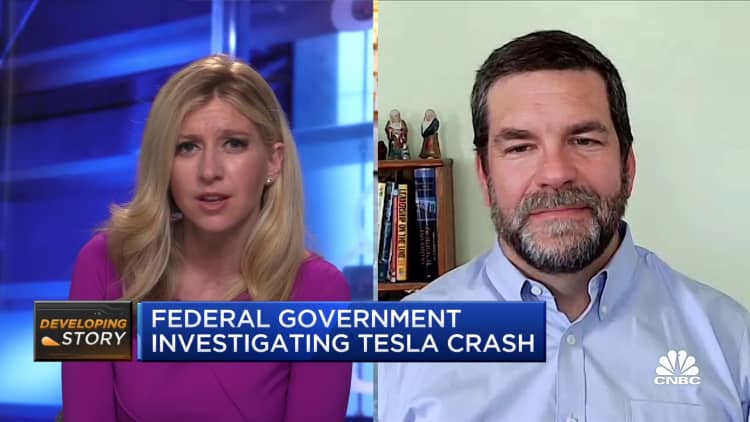
Two major lobbying groups for the U.S. automotive industry are urging updates to federal vehicle safety regulations in the wake of high-profile crashes involving Tesla vehicles.
During a Senate subcommittee hearing Tuesday, executives with the Alliance for Automotive Innovation and Motor & Equipment Manufacturers Association said the U.S. needs better standards and protocols to address automated driving systems like those sold by Tesla under the brand names Autopilot and Full Self-Driving.
Tesla has drawn criticism for its design, testing and marketing of these systems, including failure to prevent drivers from abusing or over-estimating the capabilities of Autopilot and FSD.
Questions are swirling about whether Autopilot or FSD were to blame in any way in recent Tesla crashes the National Transportation Safety Board and National Highway Traffic Safety Administration are now investigating. The NHTSA has opened around 28 investigations into Tesla vehicle crashes to date, and about 24 of these are active. NTSB has opened 8 such investigations.
Automated driving systems or driver-assist systems can control of some of a vehicle's functions. But automakers still require drivers to remain attentive and engaged in driving even if the systems are in use.
Generally, driver assist relies on a mix of cameras and sensors. Some car makers use advanced mapping along with sensors to limit use of their systems to certain roads.
No precise federal regulations or performance standards govern automated driving systems in the U.S. despite their commercial availability.

"The U.S. is in danger of losing our competitive edge due to a lack of clear national policies," Ann Wilson, senior vice president of government affairs at the Motor & Equipment Manufacturers Association, said during Tuesday's hearing. She later added, "NHTSA can do more and should do more."
John Bozzella, CEO of the Alliance for Automotive Innovation, said a "more strategic and more robust approach" to the government's New Car Assessment Program is needed. He also said a modernization of the government's Federal Motor Vehicle Safety Standards (FMVSS) that specify design, construction, performance, and durability requirements for vehicles also should be analyzed regarding highly-automated and autonomous vehicles.
"We do need a national strategy, a framework that gets up to a new type of regulation," he said.
The comments came Tuesday afternoon during a Senate Subcommittee on Surface Transportation, Maritime, Freight, and Ports hearing regarding how automotive innovation will influence the future of vehicle safety, mobility, and technology in a global economy.
It came a day after three Democratic U.S. senators on Monday introduced legislation mandating performance standards for driver-monitoring systems and requiring installation of those systems in new vehicles.
Tesla is not a part of the Alliance for Automotive Innovation or Motor & Equipment Manufacturers Association. The company did not respond for comment.
Driver-monitoring
Prior to the hearing, the Alliance for Automotive Innovation, which represents auto suppliers and manufacturers producing nearly 99% of new cars and light trucks sold in the U.S., released several safety principles related to driver monitoring in vehicles with driver-assist systems such as Tesla's Autopilot.
The guidelines, among other things, push for automakers to adopt camera-based driver monitoring systems for vehicles that have automated driving or driver-assist systems. These are designed to sense whether drivers are staying attentive and ready to drive manually in situations where the automated program won't suffice.
General Motors, Subaru and BMW have camera-based driver monitoring systems already, and others such as Ford Motor have announced similar plans. Tesla vehicles have cabin cameras, but according to the company's owners manuals, these are not used for driver monitoring. Tesla's systems require drivers to "check in" by touching the steering wheel.
"This issue that we're discussing now -- and I agree with you – is one of consumer awareness and consumer confidence. This is why we outlined these driver monitoring principles today," Bozzella said during the hearing without mentioning any company or specific system. "Driver-monitoring is an important element of this."

Tesla investigations
Consumer Reports last week found a 2020 Tesla Model Y could "easily get the car to drive even with no one in the driver's seat."
The test involved rigging the Tesla's steering wheel to skirt the vehicle's safeguards that may have otherwise disabled Autopilot. The test followed a fatal crash of a 2019 Model S in Spring, Texas in April that elicited two federal investigations by the National Transportation Safety Board and National Highway Traffic Safety Administration.
After a preliminary investigation there, a Harris County constable named Mark Herman told television stations that his investigators were "certain" that nobody was in the driver's seat of the Tesla at the time of the crash.
Comprehensive investigations have not been completed, and authorities have not said whether Autopilot or Tesla's premium automated driving system FSD were in use before or at the time of the collision. Tesla cautions in its owners' manual that Autopilot and FSD require active supervision.
Tesla CEO Elon Musk said earlier this month in a tweet: "Data logs recovered so far show Autopilot was not enabled & this car did not purchase FSD. Moreover, standard Autopilot would require lane lines to turn on, which this street did not have."
On a first-quarter earnings call Monday, Musk said journalists should be "ashamed" of their reporting on the crash. Tesla's vice president of vehicle engineering, Lars Moravy, also shared additional details he said Tesla had learned from assisting in the local and federal investigations so far.
Among other things, Moravy said that in the Spring, Texas incident, "Autosteer did not and could not engage on the road condition as it was designed." He added that the car "only accelerated to 30 miles per hour," before it crashed into a tree, and that a steering wheel deformity indicated to Tesla a "likelihood that someone was in the driver's seat at the time of the crash."
During the Tuesday government hearing, Sen. Richard Blumenthal, D-Conn., criticized Tesla and Musk for speaking about the crash while federal investigations are still underway.
"I was very disappointed that Tesla through its CEO took to Twitter to downplay the involvement of the company's advanced driver assistance system before both the NTSB and NTHSA have completed their ongoing investigation into the deadly accident," he said.
The NTSB told CNBC via email, "Our investigation is ongoing and we are focused on the operation of the vehicle and the post crash fire."
NHTSA, and Spring, Texas police were not immediately available to comment.
Blumenthal indicated that he agrees with some auto lobbyists that federal safety standards and new regulations are needed.
He said, "Tesla's crash highlights that there are many unanswered questions regarding the technology that purports to be automated. And sadly, there are no current regulations to provide the public with a lot of comfort that more automation without significantly upgraded consumer protection is the answer."



